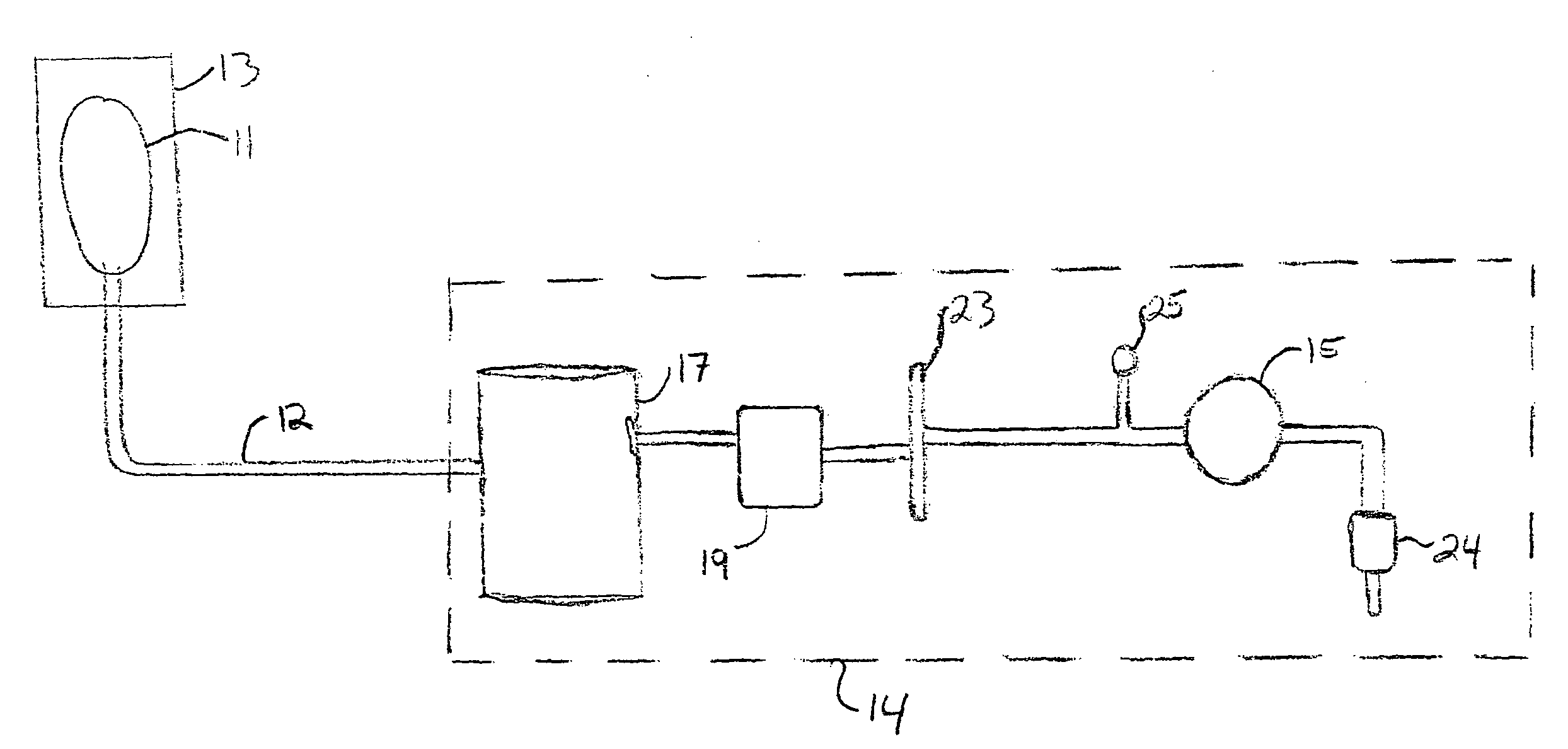Negative pressure wound treatment apparatus and infection identification system and method
- Summary
- Abstract
- Description
- Claims
- Application Information
AI Technical Summary
Benefits of technology
Problems solved by technology
Method used
Image
Examples
Embodiment Construction
[0023]Although those of ordinary skill in the art will readily recognize many alternative embodiments, especially in light of the illustrations provided herein, this detailed description is exemplary of the preferred embodiment of the present invention, the scope of which is limited only by the claims that may be drawn hereto.
[0024]Referring now to the figures, and to FIG. 1 in particular, the present invention 10 is shown to generally comprise a foam pad 11, or other screen means, for insertion substantially into a wound site and a sealing means, such as a wound drape (not shown), for sealing enclosure of the foam pad 11 at the wound site. Flexible tubing 12 may be utilized to fluidically connect the foam pad 11 to a vacuum source 14. The vacuum source 14, which may encompasses a vacuum pump 15 and the sensing device, which may be comprised of a gas chromatograph 16. An exemplary gas chromatograph that may be utilized is disclosed in U.S. Pat. No. 5,611,846 issued to Overton, et al...
PUM
 Login to View More
Login to View More Abstract
Description
Claims
Application Information
 Login to View More
Login to View More - R&D
- Intellectual Property
- Life Sciences
- Materials
- Tech Scout
- Unparalleled Data Quality
- Higher Quality Content
- 60% Fewer Hallucinations
Browse by: Latest US Patents, China's latest patents, Technical Efficacy Thesaurus, Application Domain, Technology Topic, Popular Technical Reports.
© 2025 PatSnap. All rights reserved.Legal|Privacy policy|Modern Slavery Act Transparency Statement|Sitemap|About US| Contact US: help@patsnap.com



